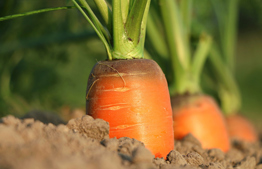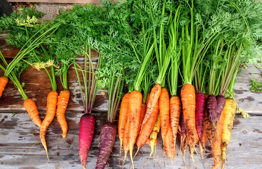Laws of Ma'aser Sheni

Redeeming Ma'aser sheni and deling with the coin in our days, is one of the most complicated act for people. In this article we will explain the main halachik guidelines.
Preface
The Torah states (Devarim 14:23): "You shall consume the tithes of your new grain, wine, and oil … in the place where He will choose to establish His name so that you may learn to revere the L-rd your G-d forever."
Ma'aser sheni differs from all other types of ma'aserot, inasmuch as it isn't given to a third party (Kohen, Levi, or a poor person). Rather, it goes to the produce owner and his family, who eat it in Jerusalem in a state of ritual purity. Ma'aser sheni is sacred.
In the times of the Beit HaMikdash, each person would bring up their produce to Jerusalem, eat it in ritual purity within the walls of Jerusalem, together with their families—similar to kodashim kalim.
The Torah makes provisions for those who live far away from the Beit HaMikdash: they can transfer the sanctity of their ma'aser sheni to money, bring the money to Jerusalem, and buy and eat food there in a state of purity.
Shmuel teaches (Temura 27b): "Consecrated property worth one hundred dinars [maneh] that one desacralized [transferred to a coin worth] one peruta is desacralized." That is, bedi'aved one can transfer an object's sanctity to money less than its actual value. Minimum value for this is equivalent to one peruta.
Today we can no longer eat ma'aser sheni since we are all tamei lamet and have neither a mizbe'ach or Beit HaMikdash. The money is also sacred and it cannot be used for any other purpose. For this reason, the Geonim write that today, lechatchila it's possible to redeem ma'aser sheni on a shave peruta (based on Erchin 29b). Modern poskim rule accordingly.
Today a peruta is equivalent to 9 agorot, so the minimum coin for transferring ma'aser sheni sanctity is 50 agorot.
How much is a peruta worth today?
As we mentioned previously, the sanctity of ma'aser sheni needs to be transferred to a coin worth at least a peruta. A peruta is a bronze coin that was the smallest coin of value in Mishnaic times. The value of a peruta is half a kernel of barley of sterling silver (Rambam, To'en VeNitan 3:1; Shulchan Aruch, YD §331, 134). The weight of a standard kernel of barley is 0.05 g, meaning a peruta is worth 0.025 g; that is, 1/40 g of sterling silver.
Today we don't purchase silver by the gram or kilogram, rather by the ounce (Troy ounce, oz t, to be precise), which weighs 31.1035 g. That is, we need to take the price of an ounce of silver and divide it by 1244.44 (40 x 31.1035). It is generally calculated in dollars; in Israel, the amount needs to be converted to shekels.
Today (21 Sivan 5779), 1 oz t of silver is purchased at $15.46, or NIS 54.63. This means that a peruta is 4.39 agorot (54.63 ÷ 1244.44), or 1.24 cents (15.46 ÷ 1244.14). However, since one must pay VAT (17%) to purchase silver, we multiply this amount by 1.17. This brings us to 5.137 agorot or 1.45 cents.
The higher the price of an ounce of silver, the higher a peruta's value. In the past (2011), 1 oz t of silver rose to a staggering $47, so the peruta's value rose accordingly. In 2001, though, it plunged to $6.
In conclusion: 1 peruta = the price of 1 oz t of silver ÷ 1244.14 × 1.17.
To see the updated value of the peruta, see here.
In practice, we should use a 50 agorot coin or a nickel to avoid having to check each time.
There is no problem using a coin of greater value for the long term. That is, if we take a 10 shekel coin, for instance, and we figure (for the sake of this example) that each transfer "takes up" 10 agorot in my coin, we can reuse the coin for another 99 transfers. However, we have to ensure that we do not use the coin beyond this limit. If used beyond the limit when there is no more room left in the coin for the sanctity, the ma'aser sheni sanctity remains in the produce. The transfer is then void and the produce is still sacred and forbidden to eat!
When the coin is filled to its capacity, there is a very practical solution: we can take another 10 agorot coin and transfer the sanctity of the original (NIS 10) coin onto the new peruta vareva in the 10 agorot. This new 10 agorot coin should be defaced or thrown into the sea. Now the old NIS 10 coin is freed up for another 100 transfers.
Beit HaOtzar membership for tourists
Upon request, we added a new membership option: a one-time membership (for two months) to Beit HaOtzar, which includes a designated coin for ma'aser sheni handled on the member's behalf, for only NIS 18. This service is meant primarily for tourists visiting Israel who want to separate terumot and ma'aserot in a mehudar fashion relying on the coin in Torah VeHa'aretz Institute's safe. This two-month membership makes this possible without having to commit to the full year-long membership.
This option is available on our website under Our Services (check Tourist).
Adding a Chomesh
Vayikra 27: 30–31 states: "Any tithe of the land, of the seed of the land, of the fruit of the tree, belongs to G-d; it is holy to G-d. If a person shall redeem some of his tithe, he shall add a fifth to it." As we see from the verse, the tithe in question is sacred. Since ma'aser rishon and ma'aser ani are both devoid of special sanctity, it is clear that the verse relates to ma'aser sheni, the second tithe.
The Mishna (Ma'aser Sheni 4:3) qualifies that this additional fifth, chomesh, is given only when a person redeems his own produce, yet this is unnecessary when redeeming another's: "One who redeems his own ma'aser sheni adds one-fifth, whether if it is his or if he has received it as a gift." The Mishnah explains (4:4) that one is allowed to avoid adding the chomesh by giving the produce to a bar/bat-mitzvah aged child to redeem the ma'aser sheni produce on the parent's behalf. Rambam (Ma'aser Sheni 5:1) adds that brothers can likewise redeem each other's ma'aser sheni and circumvent adding the chomesh. The Yerushalmi implies that one who redeems his own produce on another' s money is also exempt from adding the chomesh.
In Temple times the chomesh was significant, since the produce was redeemed at its value. Today, though, we only redeem produce onto a peruta, so there is not a major difference.
If a messenger is tithing on behalf of a produce owner, he needs to add the chomesh. In general, though, people redeem their own produce, so the additional chomesh is necessary.
What happens when one entrusts another to redeem the ma'aser sheni onto his own money ahead of time?
Note: Whenever the Torah requires the adding of a CHOMESH, it is 25% (not 20%) that needs to be added. How so? By adding 25% (that's a quarter), that which is added becomes 1/5 of the total amount (principal plus the chomesh). For example, for produce worth 100₪, 25₪ is added, resulting in the addition (25) being one fifth of the whole amount (125).
Transferring sanctity to someone else's coin
we saw that it is permissible to transfer the sanctity of ma'aser sheni fruit (chillul) onto someone else's coin, which exempts one from adding a chomesh. Of course, providing that permission is granted.
However, what happens when a pulpit rabbi, for instance, gives permission to members of his congregation to transfer sanctity of their fruit to his coins? That is, the congregants will now perform this transfer many times, without giving notice to the rabbi (=owner of the coins).
Rabbi Zvi Pesach Frank writes that this is problematic. He explains that the act of giving permission essentially transforms the owner of the produce into a messenger (shali'ach) for the chillul, and one cannot become a messenger for something that does not yet exist. This rule is mentioned in the Gemara (Nazir 12a) in the context of appointing a messenger to consecrate a woman who is still married but is about to be divorced; this appointment is void if at the time the mission is impossible for the messenger to perform. Here too, it seems, the rabbi is appointing his congregants as messengers to redeem the sanctity of ma'aser sheni produce onto his coin—yet the produce has not yet assumed ma'aser sheni status and sanctity!
The Chazon Ish writes that in this case it is possible to be lenient: theoretically a person can purchase produce at the moment they are appointed messengers, separate ma'aser sheni, and transfer its sanctity to a coin, so this is sufficient.
Rabbi Mordechai Eliahu, though, is stringent lechatchila. In practice, he recommends that rabbis make each congregant partners in the coins. Here, though, an additional chomesh would be necessary, since the coins belong to the produce owner.
At Torah VeHa'aretz we follow this approach and members are our partners in owning the coins.
Peruta and a quarter
As we discussed earlier, someone who redeems the ma'aser sheni from his own produce to a peruta needs to add a chomesh (one-fifth).
The Chazon Ish (Demai 3:15) writes that may be the sanctity should be transferred to a peruta and a quarter: one peruta for the ma'aser sheni and another quarter peruta for the chomesh. If this chomesh is not added, the sanctity of the ma'aser sheni (without the chomesh) has effectively been transferred on to 4/5th of a peruta as the chomesh takes up 1/5th of the peruta. Ma'aser sheni sanctity cannot be redeemed on less than a peruta.
Rabbi Shlomo Zalman Auerbach (Minchat Shlomo I §67:13-14), in contrast, maintains that this is not the case: first, the chomesh is added to the ma'aser sheni. Only then the entire amount is redeemed on the peruta. He believes that one peruta is sufficient to desacralize both the produce and the chomesh.
What happens when someone redeems produce plus the chomesh onto a peruta, but it turns out that halachically he didn't need to add the chomesh (since he was not the produce owner)? In this case, Rabbi Auerbach says that it is possible that the redemption isn't effective since the produce itself was redeemed onto 4/5th of a peruta and not an entire peruta.
For the above reasons, both Rabbi Auerbach and the Chazon Ish advise redeeming produce on a peruta-and-a-quarter.
To account for all possible situations and halachic opinions, Torah VeHa'aretz Institute came up with the following formula:
"What I have designated as ma’aser sheni, plus a quarter of its value, is now redeemed by transferring its sanctity to a peruta and quarter’s worth of my designated coin."
For further discussion, see Rabbi Ehud Achituv, "Redeeming ma'aser sheni onto a peruta-and-a-quarter, HaTorah VeHa'aretz IV, 5759, p. 218.
When ma'aser sheni is worth less than a peruta
Sometimes we pick one fruit from the garden, bring it into the house, and need to take terumot and ma'aserot. In this case, the ma'aser sheni (9%) of the amount of fruit will be worth less than a peruta (today approximately 5.2 agorot).
Standard cucumbers weigh 100 g and cost 5 shekels/kg; that is, 50 agorot per cucumber. The amount of ma'aser sheni (9%) is about 4.5 agorot, which is less than a peruta. This scenario is especially common with herbs where a few leaves are picked each time.
The Gemara (Bava Metzia 53b) says: "The Sages taught: 'And if a man will redeem of his tithe and he will add one-fifth' (Vayikra 27:31) [infers]: Of his tithe, but not all his tithe. This excludes the second tithe that does not have the value of one peruta."
There is a machloket as to the Sages' intent: in Yerushalmi (Ma'aser Sheni 4:2) and Rambam (Ma'aser Sheni 5:4-5) it seems no chomesh should be added, but it is possible to redeem it. Rashi and Tosafot, though, understand that it is not possible to redeem such ma'aser sheni. A peruta is the coin of the least value that halacha considers for this purpose.
However, Hezkiya provides a solution: "when ma'aser sheni is not worth a peruta, it and one-fifth its value are redeemed on the original coins." That is, if I transferred ma'aser sheni sanctity from produce worth more than a peruta, I can continue to use it for ma'aser sheni worth less than a peruta.
Tosafot Rosh explains that new coins cannot "absorb" ma'aser sheni sanctity from produce worth less than a peruta; if a coin was already used for this purpose, however, the sanctity in the coin can join the less-than-peruta sanctity, which together redeem the produce.
Rabbi Avraham Yashaya Karlitz, the Chazon Ish, made Aliya on 16 Tammuz 5693 (July 10, 1933) at the age of 55. Two days later, he sent a halachic query to Rav Kook (then Chief Rabbi of Palestine) asking if it is possible to transfer ma'aser sheni sanctity from produce worth less than a peruta to a coin already used for such transfers. Others told him that this was prohibited, but didn't know why.
On 20 Tammuz, Rabbi Kook (Mishpat Kohen §53) answered and explained as follows: in the past, the ma'aser sheni was redeemed onto its equivalent value. Then there was always some extra "change" left in the coin, because we would transfer onto a little more than what we need ("אי אפשר לאדם לצמצם במעותיו" Bava Metzia 52), so the "change" left in the coin could be used for transferring ma'aser sheni worth less than a peruta. However, today we transfer "שוה מנה בשוה פרוטה", that is, large quantities of ma'aser sheni produce onto a peruta. Furthermore, today we transfer exactly to a peruta: we cannot redeem less than a peruta's worth of ma'aser sheni since no "change" is left in the coin.
In response to a follow-up letter, Rav Kook ruled that the first transfer onto a coin should be done onto its full value. Then it would be possible to use the coin subsequently for ma'aser sheni worth less than a peruta.
The Chazon Ish (Demai 3:15) and Rabbi Auerbach (Minchat Shlomo I §67:11) wrote that it is possible to transfer to original coins even when large quantities of ma'aser sheni are transferred to a peruta.
At Beit HaOtzar, we are stringent like Rabbi Kook and first transfer ma'aser sheni onto its value in the coins. Consequently, members can rest assured that ma'aser sheni worth less than a peruta can be transferred onto our coins.
Peruta chamura
The Chazon Ish (Demai 15:12) discusses transferring ma'aser sheni sanctity from produce worth less than a peruta onto a coin already used for transferring this sanctity. For this transfer to be valid, the level of halachic obligation for the previous transfer must be higher or equivalent to the current redemption for the transfer to be valid.
Unequal levels of halachic obligation where the transfer is not valid:
- The first transfer was from a vegetable (for which separation of terumot and ma'aserot is a rabbinic obligation), and the current transfer is on less than a peruta worth of grain, wine, or oil (biblical obligation).
- The first transfer was on safek tevel (possibly untithed produce) and the current transfer is on tevel vaday.
- The first transfer is on fruit that a person bought from someone else (halachic status of lako'ach; lit., customer) and the current transfer is on fruit from one's tree.
- The first transfer was on produce grown in a hothouse or indoors and the current transfer is on produce grown in soil outside.
- The first transfer grew in olei Mitzrayim territory, the second transfer in olei Bavel
At Beit HaOtzar, Torah VeHa'aretz Institute's terumot and ma'aserot fund, we are careful to perform the first transfer on wheat (biblical) that is definitely tevel, grown by a Jewish farmer and not bought, grown outside in the soil, in olei Bavel territory. The farmer appoints the Beit HaOtzar rabbis to take terumot and ma'aserot on his behalf.
This is a peruta chamura. That is, the sanctity transferred to the first peruta in the coin that has the highest level of obligation possible today. This ensures that all further transfers will be of equivalent or lesser obligation.




